#greek warrior culture
Text
Guys, I figured out- the whole hero vs. villain thing with c!Technoblade, and how it relates to Bedrock Bros (an unoffical essay)
So, the whole reason I made this blog was because of this realization I came to a few months back and need the fandom to know. This is all from the mythology class I took, focusing on Classical mythology. Also, I’m not up to date on lore.
So, the big debate in the fandom (I don’t know how strong it still is, but I know that people were talking about this at some point) is if c!Technoblade is a hero or villain. And that got me thinking. There are strong arguements for both, but I really couldn’t come to a decison. Then, I was in my Mythology class, studying the Iliad and Greek warrior culture, and things were starting to sound really familiar. We all know that Techno is a major nerd when it comes it Greek mythology, and the pieces started coming together.
So, a the qualifications to be a Greek hero are things like loyalty, strength, courage keeping promises, contempt towards inferiors, and the like. There is absolutly no need for them to be good people or moral individuals. In fact, they usually aren’t in the slightest. But they still are heroes in the eyes of the Greeks, despite not mathching up with our western ideals of what makes up a hero.
There are also three pillars to Greek warrior culture. I’ll include all of the relevant class notes at the bottom for added clarity, but in summary, it’s basically 1: being the best- physically and in the way they can give persuasive speeches. This is displayed by a great speech or a murderous rampage. 2: Honor through gains and spoils and 3: glory and fame that continues thoughout time, through skill or eloquence. Starting to sound familiar?
Techno has his English major speeches and kills crowds of people (ex. the festival after he kills Tubbo). I could go on a whole thing about the Axe of Peace and Carl the horse as a manifestation of geras (the ultimate prize a warrior can have), which is a big part of the second pillar. He’s big on his clout and image, and while this is just something that he seems to have absorbed into his overall image, you can see the lean in during lore.
This can explain some events that seem to contradict the heroic model that we expect. All of the times he says he was betrayed and destroys L’manburg seems like a villainous thing to do- but Greek heroes stick to their principles, no matter how illogical or unreasonable the results of their actions are. Succumbing to peer pressure? They would sacrifice anything to keep up their image as a powerful warrior.
Nothing shows this better than things like the favor to Dream. A Greek hero always keeps their promises and stays loyal. And a lot of this seems contradictory, or frustrating. And it is. But it’s a different culture from a different time. (Trust me, I love the Iliad, but reading it can be so painful at times). Put yourself into a Greek heroes shoes, and a lot of these villainous actions can be justified by their code and culture.
A great way to compare our Western hero culture with the Greek hero culture is by comparing the actions of c!Tommy with c!Technoblade. Tommy could be seen as a representation of a Western heroics. He wants to do the right thing, stay loyal to his friends and country, and get justice. He’s generally forgiving (we do have to keep in mind that this is Tommy, and he is a teenage boy). We can generally look at his actions and agree with them, in some way.
After exile, his interests align with Technoblade’s for a bit, though it falls apart. He goes back to Tubbo, which Techno sees as a betrayal by his Greek culture POV, while Tommy sees this as a logical progession. Also, Tommy sees the destruction of L’manburg as a betrayal, while Techno sees it as a logical progression. Their respective veiws of the world are too different for them to be able to work together. Bedrock bros, in this regard, were never meant to be.
Comparing the two of them is a great model for Western v. Greek hero culture. Now, this is just a theory. But if you look at the actions that don’t seem to align with logic and compare it to the warrior culture I’ve discussed, it hits too many points, in my opinion, for it to be coincidental. Personally, I think that these similarities are on purpouse, and that Technoblade is planning out the canonical actions of his character based on these base ideas.
I don’t know if anyone else has made this connection, but here you go. Also, it would be really embaressing if someone actually said this, and I wrote a whole essay on something that’s already been confirmed and is common knowledge. I’ve barely scratched the surface, I can’t cover everything from a full college class in a Tumblr post, but I’ll add the class notes that relate. If you made it to down here, have a golden star. Thanks!
#dsmp#dsmp lore#c!techno#c!techno lore#c!tommy#c!tommy lore#bedrock bros#greek mythology#classical mythology#greek warrior culture#greek heroes#mcyt#technoblade#tommyinnit#excuse any spelling errors#its late
32 notes
·
View notes
Text

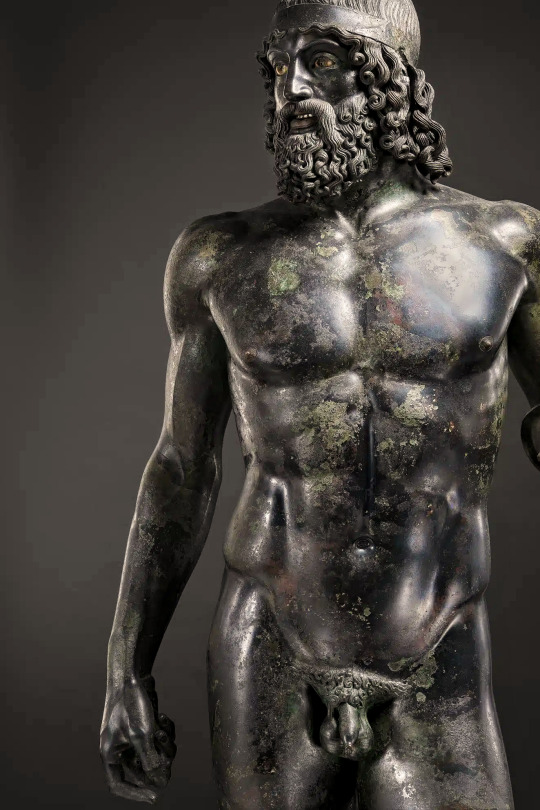





One of two full-size ancient Greek bronzes discovered in 1972 off the western coast of Calabria in southern Italy. The statue, cast circa 460-450 BC, stands 198 cm (78 in) tall. The lips and nipples are made of copper, the teeth are silver and the eyes formed from calcite. At one time this bronze warrior held a spear and shield, but they were never found. The figure may also have worn a wreath around his head. ( Photography by Luigi Spina. )
#art history#mythology#culture#ancient greece#greek mythology#warriors#antiques#vintage#art#sculpture#people#statue#retro#muscle#humanity#male beauty#history#archaeology#explore#mediterranean#greece#italy#bronzi di riace#🍕🍷
2K notes
·
View notes
Text
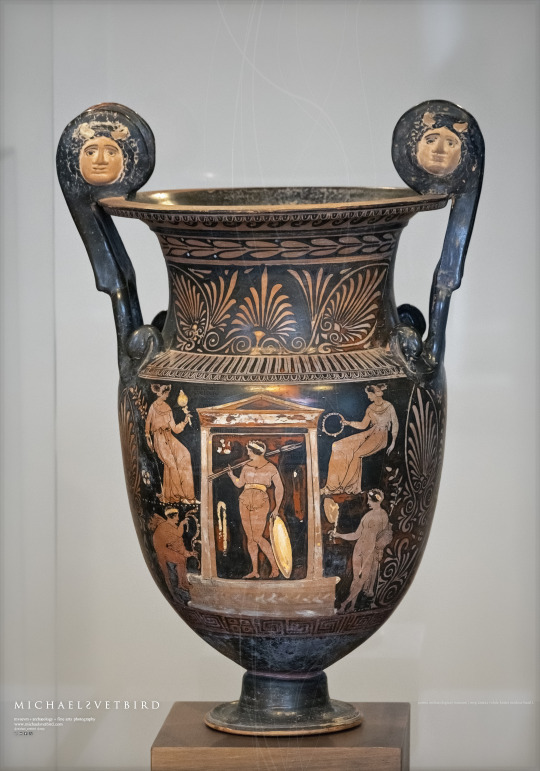


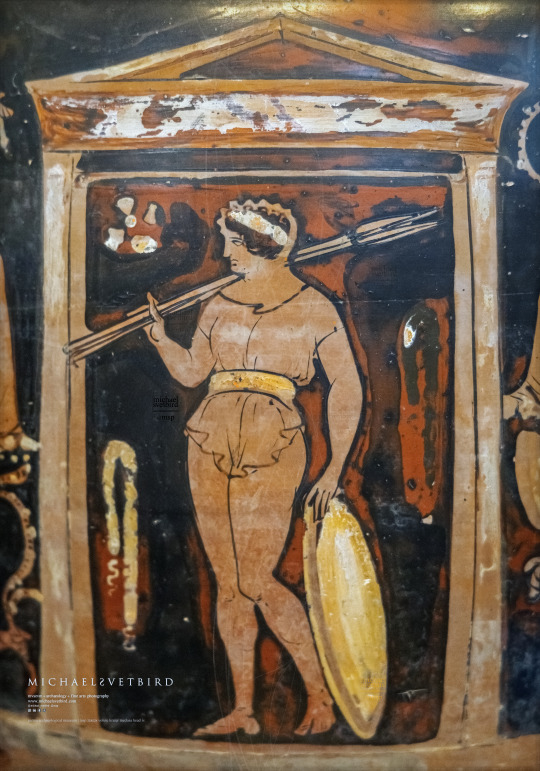
KRATER W/ THE HEAD OF MEDUSA:
Apulian Red-figured Volute Krater
Attributed to the Painter A of the Heroa Group
Ca 350 BC
[Sides A & B: Scenes from the cult of the dead]
Pic 1 : Side B;
Pic 2 : Side A, upper register, Medusa's head close-up;
Pic 3 : Side A;
Pic 4 : Side B, vessel body close-up:
Male or Female [4] ?..
Somebody's portrait? What is your opinion?
Museo Archeologico Nazionale di Parma | MANP
[Pilotta, Archaeological Museum, Floor 2]
https://complessopilotta.it/en/archaeological-museum
MANP | Michael Svetbird phs©msp 22|02|24 6000X4200 600 [I., III., IV.]
The photographed object is collection item of MANP, photos are copyrighted
[non commercial use | sorry for the watermarks]
.
#parma#archaeological museum#museo archeologico#apulian#puglia#magna grecia#krater#red figure pottery#vase painting#ancient pottery#pottery#ancient art#antiquity#ancient#archaeology#museology#museum#mythology#greek mythology#art history#antiquities#heritage#cultures#medusa#μέδουσα#warriors#art photography#archaeology photography#museum photography#michaelsvetbird
26 notes
·
View notes
Photo
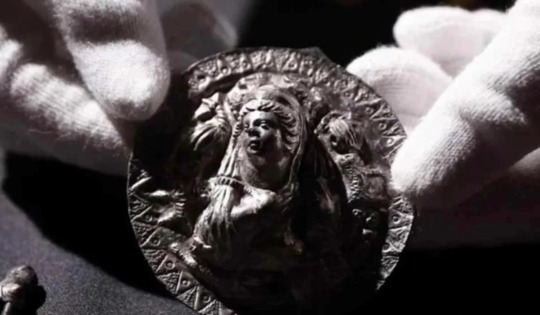

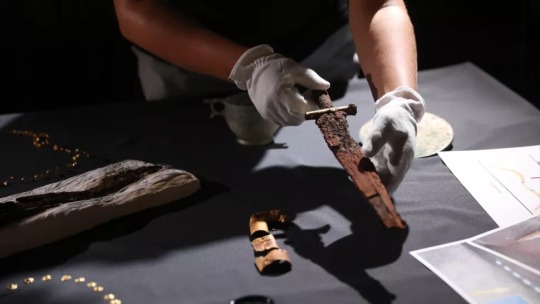

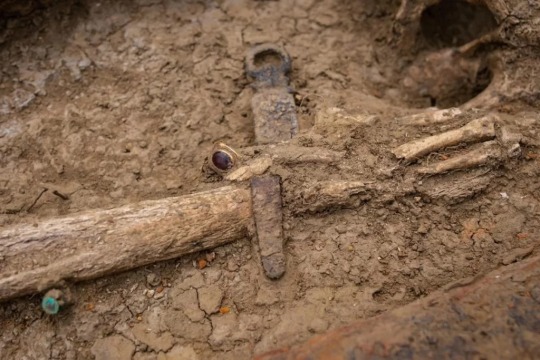
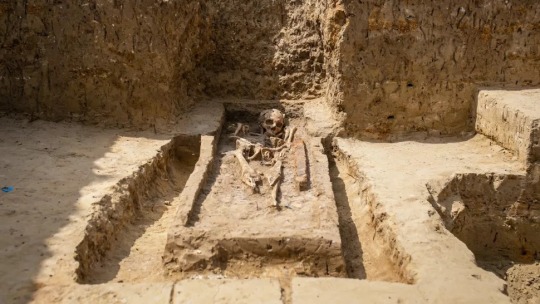

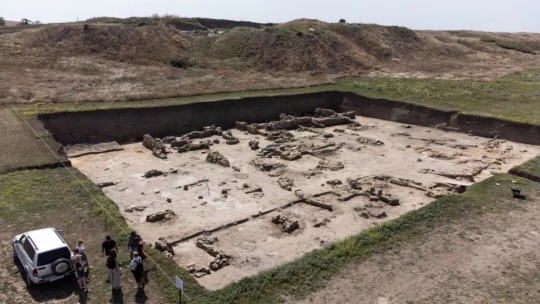
A 2100-Year-Old Medallion of Goddess Aphrodite and a Warrior Tomb Found in Russia
Archaeologists have unearthed a silver medallion depicting the Greek goddess Aphrodite (Roma Venüs) in a 2100-year-old grave of a priestess on the northeast coast of the Black Sea.
The unique medallion depicts ten rather than the known twelve signs of the zodiac and provides insight into religious practices at the time of its creation.
The discovery, in the opinion of archaeologists, raises the possibility that the buried woman was an Aphrodite priestess, the goddess of beauty and love. The rings, silver earrings, and other grave goods that were dedicated to the goddess led to these conclusions.
The grave is among a number of striking finds unearthed this summer at a site near the shore of the Taman Peninsula in southern Russia, east of the Crimean Peninsula and between the Black Sea and the Sea of Azov.
According to the Oleg Deripaska Volnoe Delo Foundation’s spokesman Ruben Bunyatyan, archaeologists Nikolay Sudarev and Mikhail Treister discovered the woman’s grave during the Phanagoria archaeological expedition’s 2022 summer season.
The large medallion is made of silver and shows the goddess Aphrodite in the center, surrounded by symbols portraying 10 signs of the zodiac.
Greek historian, Hecataeus of Miletus, said that Phanagoria was founded in the sixth century B.C. by refugees from Teos, a Greek city on the coast of Anatolia now part of modern-day Turkey.
The Aphrodite medallion is surrounded by 10 embossed symbols that correspond to signs of the zodiac, including a lion for Leo, a bull for Taurus, and a scorpion for Scorpio. But the symbols for the zodiac signs Aquarius and Libra are missing, and the researchers don’t know why.
According to archaeologists, the inclusion of the zodiac indicates the medallion is a portrayal of “Aphrodite Urania” — the heavenly aspect of the goddess, as distinct from her Earthly aspect, “Aphrodite Pandemos.”
It also suggests a belief in astrology, the idea that the positions of celestial bodies can influence events on Earth, which was widespread throughout the ancient world.
The silver medallion found in the early first century B.C. grave shows the embossed head, shoulders, and hands of Aphrodite, based on other contemporary iconographic portrayals.
Such medallions were common in the territory of the Bosporan Kingdom as early as 2,300 years ago, said Maria Chashuk, senior research associate of the Phanagoria archaeological expedition.
The medallion is about 7 centimeters (2.75 inches) in diameter and 15 millimeters thick.
Medallions of the sort were used in many ways: as brooches, as headgear accessories, and as pendants.
Another intriguing find at the Black Sea site was a warrior’s tomb featuring a sword that had been made in early medieval Iran.
The large iron sword was found in the style of swords from the Sassanid, or the second Persian Empire, which ruled the areas of modern-day Iran, Iraq, Turkmenistan, and much of Afghanistan. The researchers think that the sword may have been a diplomatic gift or that it may have been taken as a military trophy.
According to the statement from the Volnoe Delo Foundation, “this massive, expensive and prestigious sword was part of the equipment of the horsemen of the era of the Great Migration,” a period when much of Europe and Western Asia was threatened by invasions of peoples from Central Asia, such as the Huns. The unique find not only reflects the tastes of the late antique warriors of the Taman Peninsula, but also suggests that in the middle of the first millennium Phanagoria had close political and cultural ties with the [Sassanid] Empire,”
The warrior’s tomb (first century B.C.) also contained fragments of a horse’s harness, buckles, belt tips, glass jugs, utensils, and wooden boxes, as well as a pottery jug, beads, a brass mirror, and a pair of iron scissors.
By Leman Altuntaş.
#A 2100-Year-Old Medallion of Goddess Aphrodite and a Warrior Tomb Found in Russia#greek goddess aphrodite#aphrodite priestess#archeology#archeolgst#ancient tomb#ancient grave#ancient artifacts#history#history news#ancient history#ancient culture#ancient artifacts#greek history
156 notes
·
View notes
Text
Ancient Greece: The land of mathematics, medicine, great wars and warriors...
Their greatest warrior: A SASSY GAY TWINK!!
#this twink was apparently the greatest warrior#not doubting it though#have you seen gay rage!!#achilles x patroclus#achilles and patroclus#ancient greek culture#ancient greece#patrochilles#the song of achilles
67 notes
·
View notes
Text

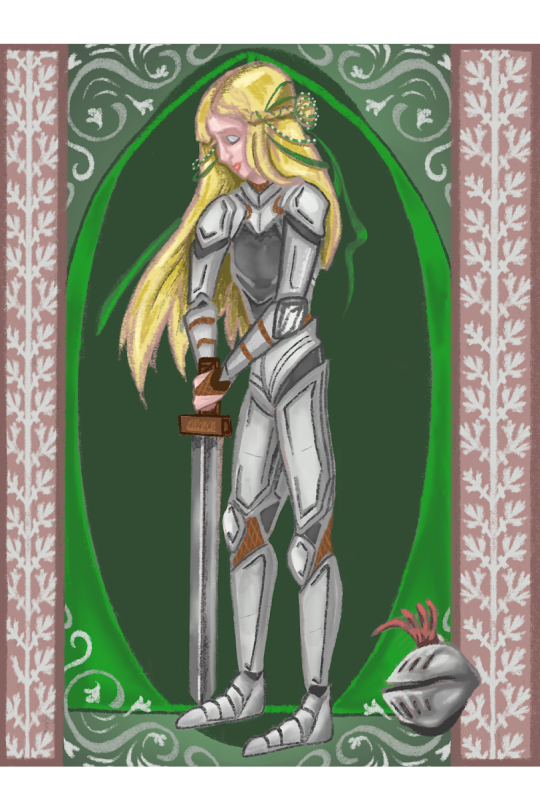
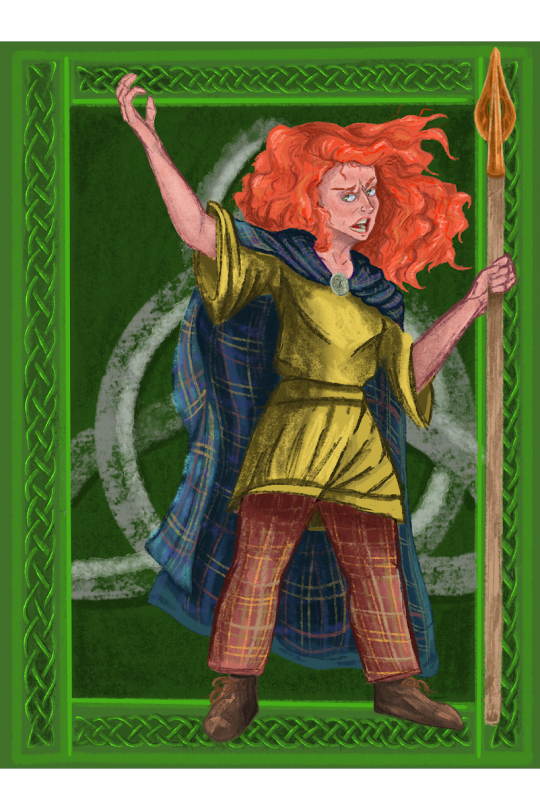
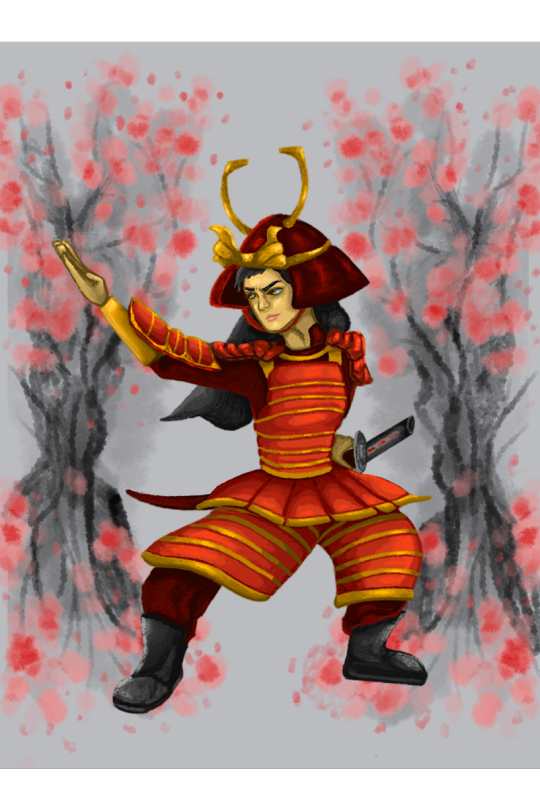


My favorite pieces. Working on more. Disclaimer, these are not historically accurate, they are historically inspired.
I remembered my professor telling me there is no feminine declension to the word “hero” and I decided to change that. So here’s some ancient ladies in masculine warrior dress from their respective cultures!
#my ocs#ancient culture#warriors#female warrior#hoplite#knight#celt#samurai#viking#greek#English#irish#japanese#indian#digital drawing#sword lady#women with swords#art tag
17 notes
·
View notes
Photo

The Amazonian queen Penthesilea is one of Mary Beard’s top five powerful women in ancient Greece and Rome
She is shown on this storage jar, wearing a leopard skin and a crested helmet, captured just at the moment she is killed by the mythical hero Achilles.
The Amazons were a wild race of warrior women, and women only, who were believed by the Greeks to live somewhere on the northern borders of the Greek world.
They were entirely mythical, but were still capable of striking fear into the hearts of Greek men, always representing a potentially deadly threat to male civilisation.
This 6th-century BC pot shows Achilles plunging his spear into Penthesilea’s throat, a stream of blood gushing from the wound. According to myth, at the moment Penthesilea died, she and Achilles fell in love.
Storage jar showing Achilles killing the Amazon queen, Penthesilea. Attica (Greece), c. 530 BC. Read more: http://ow.ly/eQay50NbRgF
(Source: The British Museum Facebook page)
The scene of Penthesilea revealing her face to Achilles in their life or death confrontation reminds me of a gender reversed version of the scene in Star Wars: The Force Awakens where Kylo Ren unmasks before the captive Rey.
#amazons#penthesilea#achilles#ancient greece#greek#greek culture#ancient greek#ancient greek art#storage jar#attica#the illiad#Warriors#amazon#women warriors#greek heroes#orange and black#ancient art#greek myths
12 notes
·
View notes
Text

When you’re single but want to fulfill the cultural mandate.
#cultural mandate#be fruitful and multiply#duolingo#duolingo greek#duolingo meme#Like arrows in the hand of a warrior#So are children born in one's youth#Psalm 127:4
1 note
·
View note
Text
I saw someone complain about “the tropicafication of books” and told people “to read the classics” like ma’am those books also have tropes? Hero’s Journey (The Hobbit), The Chronicles of Narnia (Hero’s Journey, Biblical References), Romeo and Juliet (Forbidden Lovers)
There are no original stories just retellings in different times/cultures/context. Beauty and the Beast is just Eros and Psyche, Pretty Woman is just Cinderella, Coraline is just Alice in Wonderland.
#these are just common examples#but the forbidden lovers is seen in like every culture.#the butterfly lovers (China)/ Layla and Majnun (Middle Eastern) /#pyramis and Thisbe (Greek)#like these are common story’s with a clear message#and tH E cLASSics were also inspired by these#like yea relying on tropes is shitty but some books YALL praise are also JUST tropes#the man that has it all and is still unhappy (The Great Gatsby)#a conglomeration of the stories of women in a family Little Women/The Joy Luck Club/ The Woman Warrior#like.#yea maybe don’t consume ONLY one trope ONE kind of book media but the way y’all BITCH on this site like y’all’s assses are reading anyway LM
2 notes
·
View notes
Text
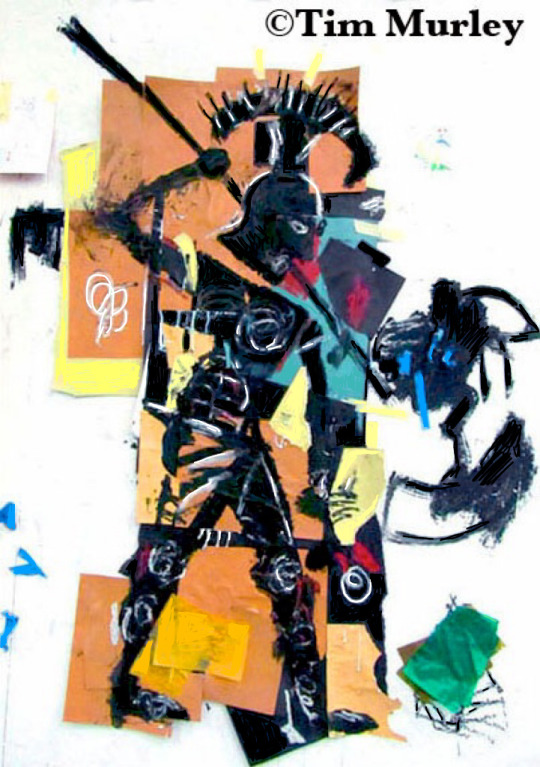
Achilles.🛡⭐️⚔️🌟🗡✨💫
#achilles#achillean#Sparta#spartan#Trojan#trojan war#Trojan warriors#greek gods#ancient greek culture#Greek#greece#ancient greek art#ancient greek philosophy#greek mythology#greek philosophy#Zeus#constellation#constellations#legends never die#collage artwork#collage artist#thetis#Apollo#contemporary painting#modern art#neo expressionism#neo pop art#basquiat#abstract expressionism#the iliad
5 notes
·
View notes
Text
Me: I'll use spring break to do some serious work with my WIPs
Also me: has plotted three chapters of my new Warrior!Briseis story, and can't stop daydreaming about it
#writing#diary pages#writer problems#writing journal#ao3 writer#greek mythology#greek mythology fandom#greek mythology fanfiction#briseis#the iliad#warrior!briseis#greek mythology inspired story#seriously i got obsessed#and i already love the character briseis becomes#i already thought about how she kills who you know achilles agamemnon...#i thought about some other things even who she lets live her whole philosophy#i thought about a scene where after her death she reunites with achilles and patroclus in hades for a moment#hell i thought about what culture the tribe she establishes in like today Austria or Germany or somewhere North has XD#I have damn issues
1 note
·
View note
Text





AMAZONOMACHY:
Attic Red-figured Column Krater
Attributed to the Polignotos Painter
https://en.wikipedia.org/wiki/Polygnotos_(vase_painter)
450-440 BC
Side A:
Two Amazons [depicted in Hellenic clothing, one with a sagaris] confront two Greek warriors.
From Tomb 724B, the Valle Pega, Chiusi area [near Ferrara], Spina.
Museo Archeologico Nazionale di Ferrara | MANF
[1st Fl. Sala XV]
• Web : http://www.archeoferrara.beniculturali.it/index.aspx?lng=ENG
• FB : https://www.facebook.com/museo.archeologico.ferrara
• IG : @museo_archeologico_ferrara
• X : @ArcheoFerrara
MANF | Michael Svetbird phs©msp | 21|02|24 5500X4200 600 [I.-V.]
The photographed object is collection item of MANF, photos are copyrighted
[non commercial use | sorry for the watermarks]
.
#ferrara#archaeological museum#attica#krater#red figure pottery#vase painting#ancient pottery#pottery#ancient art#antiquity#ancient#archaeology#museology#museum#mythology#greek mythology#art history#antiquities#heritage#culture#amazonomachy#amazons#αμαζόνες#amazzoni#oiorpata#warriors#art photography#archaeology photography#museum photography#michaelsvetbird
20 notes
·
View notes
Photo
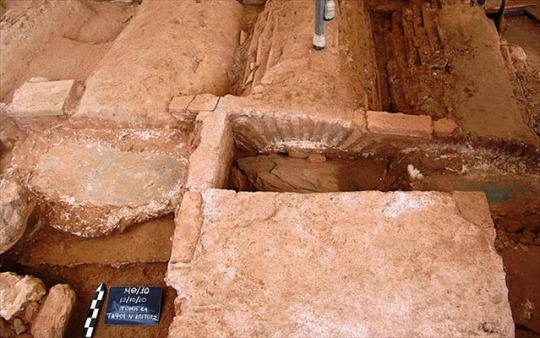


Gothic Warrior and His Weapons Found Buried in Greece
A Gothic warrior, who was buried with his weaponry, was found recently in an early Christian basilica in Thessaloniki, Central Macedonia, Greece.
The extraordinary discovery was made by a group of archaeologists who are working on the three-aisled Christian basilica dating back to the 5th century AD near the Syntrivani station of Thessaloniki’s new metro system, which is under construction.
What is particularly interesting about this discovery is the fact that this is the first discovery of such a burial not only in Thessaloniki but also in the wider region of Roman Macedonia.
The skeleton of the male figure, dating back to the 5th century, was found in the southern part of the Christian church in downtown Thessaloniki along which remains of weaponry were also found.
One of the most well-preserved of his weapons was an iron sword that was found bent, or ”folded” as described by archaeologist Melina Paisidou. The astonishing part of this discovery was the fact that despite the burial taking place in a Christian basilica, the folded sword is a sign of ancient pagan rituals.
According to archaeologists, this provides evidence that this warrior, despite the fact that most probably embraced Christianity and the Roman customs of the time, did not forget his Gothic roots, as his burial included a custom embedded in pagan tradition.
The Basilica in Thessaloniki where Gothic warrior was found
According to the official website of the municipality of Thessaloniki, the three-aisled paleochristian basilica was discovered in the western part of the Sintrivani underground station of the city. It was built on the site of an older place of worship from the 4th century AD.
This building also housed a mosaic floor, part of which has been uncovered, showing a vine stalk with birds on its branches, including the mythical “Phoenix.” The mosaic was still visible during the initial phase of use of the basilica.
Thessaloniki grew to be an important trade hub located on the Via Egnatia, the Roman road connecting Byzantium (later Constantinople) with Dyrrhachium (now Durrës in Albania), which facilitated trade between Europe and Asia.
The city became the capital of one of the four Roman districts of Macedonia while maintaining its privileges but was ruled by a praetor and had a Roman garrison.
For a short time in the 1st century BC, Thessaloniki (known in Roman times as Thessalonica) was also the capital of all Greek provinces under Roman rule. When the Roman Prefecture of Illyricum was divided between the East and West Roman Empires in 379, Thessaloniki became the capital of the new Prefecture of Illyricum.
By Nick Kampouris.
#Gothic Warrior and His Weapons Found Buried in Greece#archeology#archeolgst#ancient tomb#ancient grave#ancient artifacts#history#history news#ancient history#ancient culture#ancient civilizations#ancient greece#greek history
36 notes
·
View notes
Text
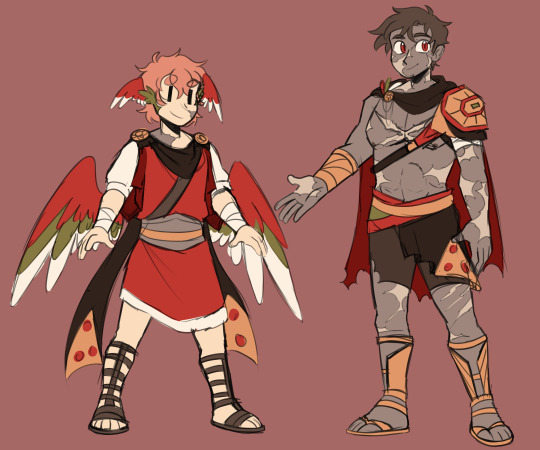

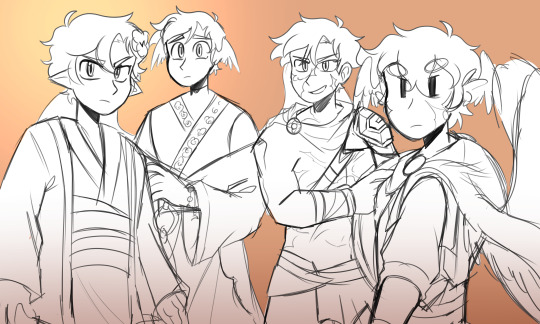
3rd life but I use mythologies/cultures as a base for their designs 💕
Monopoly Mountain -> Greek
Flower Husbands -> Chinese/Japanese
Scott uses more of a Japanese kind of clothing and Jimmy has more of a Chinese but has some Japanese stuff Scar uses more of a Spartan look as he's a warrior and Grian has more of a Greek, as he's the one behind the planning of traps and such.
Also, the extra doodle bc I love the contrast they make with their designs lmao xd
#grian#grianmc#grian fanart#gtws fanart#gtwscar#goodtimeswithscar#jimmy solidarity#solidaritygaming fanart#solidaritygaming#scott smajor#smajor1995#smajor fanart#3rd life gtws#3rd life#3rd life grian#trafficblr#mcyt#fanart
1K notes
·
View notes
Note
How physically active were actually "medieval" noble women? I know is a long period but I usually see people complaning about noble women in fantasy doing stuff such as hunting or riding horses. I have seen a couple of illustrations of fencing manuals with women in them too.
We, as a culture, especially in the US, have a very bad habit of using the British Regency/Victorian era as the gold standard for how women all over the world were treated throughout history. And the truth is, it ain’t that way. It never was, because women in this exact era used to duel each other in other parts of Europe and often did it topless.
Yes, this is real. We have records of it.
Was it all women, all the time? No. Was it often enough to mention? Yes.
There’s a really good article by Kameron Hurley, “Women Have Always Fought” that goes over the history of women warriors and the laziness of specular fiction in detail. This is a particularly great few paragraphs from the article that covers where our popular conception that women don’t fight comes from.
“Women have always fought,” he said. “Shaka Zulu had an all-female force of fighters. Women have been part of every resistance movement. Women dressed as men and went to war, went to sea, and participated actively in combat for as long as there have been people.”
I had no idea what to say to this. I had been nurtured in the U.S. school system on a steady diet of the Great Men theory of history. History was full of Great Men. I had to take separate Women’s History courses just to learn about what women were doing while all the men were killing each other. It turned out many of them were governing countries and figuring out rather effective methods of birth control that had sweeping ramifications on the makeup of particular states, especially Greece and Rome.
Half the world is full of women, but it’s rare to hear a narrative that doesn’t speak of women as the people who have things done to them instead of the people who do things. More often, women are talked about as a man’s daughter. A man’s wife.
Sounds familiar, doesn’t it?
Check out some of these real women below.
Empress Maude, the daughter of the English King, Henry I, was named her father’s heir after her brother died. While her cousin Stephen stole the throne after her father’s death, she raised an army and took the country into a civil war to take it back. They fought it out for the decade it took for her son to reach adulthood, and laid the groundwork for Henry II to become king. There’s a great novel by Sharon Kay Penman, When Christ and His Saints Slept which chronicles the civil war. If you’re interested in medieval history, I recommend reading it. Her daughter-in-law, Eleanor of Aquitaine, also led an interesting life. (It should be said, real history got to the denied female heir fights for her throne before George R.R. Martin.)
There’s great videos from Xiran Jay Zhao discussing the Chinese warrior queen Fu Hao of the Shang Dynasty and Wu Zetian, who became China’s first female emperor. (Yes, you read that right. Emperor.)
There is Khutulun, the Wrestler Princess and the great-great granddaughter of Gengis Khan, who is one source of our “defeat her in battle to marry her” tropes. She issued this challenge, “defeat her in wrestling, she’ll marry.” She scammed would be suitors out of 10,000 horses. Western male authors are so threatened by Khutulun, they’ve kept trying to rewrite her history by making her fall victim to the power of love. (No, seriously.)
There’s also Hojo Masako, the Buddhist nun who deposed her own son when he proved incompetent and ruled Japan as Shogun. Here’s her wiki entry too.
The Amazons of Greek Myth were real in that they were actual Scythian women who went to war. (As Scythian women did, just like their men.) They terrified and terrorized the Greeks so much, they became immortalized in their mythology. Don’t believe me? Here’s an article from National Geographic and this one from Live Science.
There’s stories like this all throughout history from big events to small ones. (You can find more over at Rejected Princesses if you’re interested.) There are female warriors, female generals, noblewomen who took command of their husbands’ forces, widows who took to the sea to get revenge on those who wronged them, women who rode with their husbands to battle, female assassins, female leaders of rebellions, etc. The women of the Japanese samurai class were trained to fight, and fight they did. Women warriors, queens, and politicians are all over mythology too. You’ll often see these women come out of the upper echelons of society because money creates options, but they are there. Many of those stories are lost to history, in some cases purposefully, and there was a long trend among archeologists that assumed because a person was buried with male grave goods, the body had to be male. We’re now finding out that isn’t true. There’s a significant portion of warrior corpses that have turned out to be female. Assassin’s Creed: Valhalla chose to post a notice about it in response to these exact criticisms you’re questioning.
Those people you see complaining online? They’re clinging to a version of history that doesn’t exist. More, we know it doesn’t, because popular culture is hungry to the point of desperate for aggressive, confident, and competent female characters. If they were truly a lie, they wouldn’t ring true for so many people.
The history we’re taught today largely downplays women’s achievements, contributions, and successes while uplifting those of men. It’s a fact. Go look at famous female figures anywhere, you’ll find the same story at play over and over. Historically, fantasy as a genre largely portrays a world that is, in fact, fantasy, but that fantasy has nothing to do with women doing things they’re not “supposed” to. There’s no clubhouse. There’s nothing unrealistic in imagining your female character is a kickass queen who defeats overconfident men in wrestling competitions and robs them of all their horses. It’s not unrealistic to come up with an ending that doesn’t conclude in tragedy, violent deaths, them “learning their place,” or even locked within the bonds of an unhappy marriage. (Shocker!) Some did, but the truth isn’t universal. It’s not even unrealistic to imagine they might have supportive male family members, love interests, and followers who happily (gasp) assist them in these endeavors. Maude, for reference, had bastard half-brothers who helped her instead of trying to take the throne for themselves.
History got here before fantasy authors. There’s nothing unrealistic about reality. Popular conceptions and common knowledge fed to us by the majority male dominated culture isn’t always the truth. Reality is, it’s the stories we see normalized across the media spectrum that are wrong. The ones that insist women are objects, who commodify their pain, and reframe their stories to ensure the focus remains on men. While this is changing, women are still often treated as the NPCs of male driven stories.
The people you hear complaining? They want storytelling traditions to stay that way, for the Great Man values countless narratives have reinforced to remain unchallenged. Funny as it sounds, they’re threatened by the very existence of narratives that countermand that centralized focus on men being superior, that there is a stratified gender hierarchy, and men taking their place as the sole, worshipful focus of a woman’s existence, much less these female characters being important in their own narratives. If these people weren’t threatened by female characters being people, they wouldn’t say anything. They’d just move on in apathy.
Reality is people are complicated. There’s room for all stripes in all colors and contexts. It’s no secret that history has suppressed and erased countless stories that don’t support the ruling narrative of the dominant culture. These same people forget there’s plenty of storytelling traditions that include women taking their place as warriors in cultures outside America. For all the sexism and misogyny, women fighting is not an alien concept, it’s not even foreign to other Western European traditions.
Believe what your own research is showing you, not what a bunch of idiots who can’t tell their ass from their elbow are whining about. They can’t handle someone who isn’t straight, male, and (most often) white being the central focus. Really, they can’t handle these characters as even a side focus. That’s their loss, it doesn’t have to be yours.
-Michi
This blog is supported through Patreon. Patrons get early access to new posts, and direct access to us through Discord. If you’d like to support us, please consider becoming a Patron.
4K notes
·
View notes
Text
On this drinking cup, created about twenty years after the Persian Wars, we see a Greek hoplite defeating a Persian warrior. The Greek is more heavily armed, with a large, round shield. He’s bare-legged, in simpler-seeming clothes. The Persian, on the other hand, wears heavily patterned garb, including pants, as he falls under the hoplite’s sword.

Another vase, made around the same time, showed a Greek soldier pursuing a Persian, with the Greek on one side of the vase:
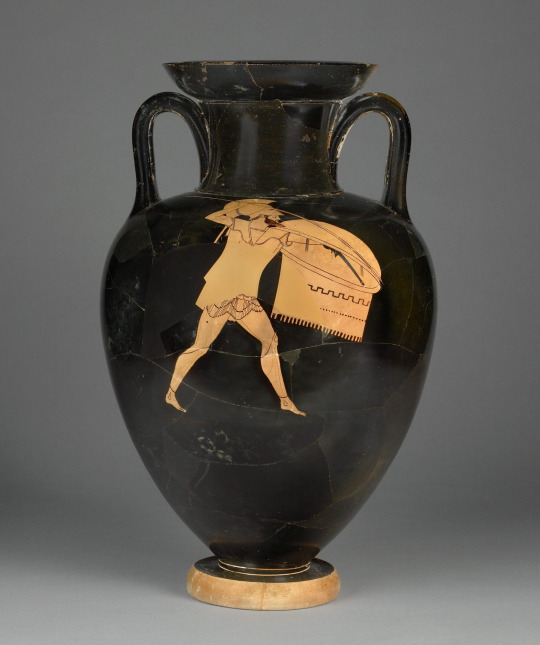
And the Persian, armed more lightly, with a bow instead of a spear and in tight-fitting striped clothing, on the other:

A third vase depicts the conflict between the Greeks and Persians in terms of sexual conflict -- click on the post below to see the whole story:
{WHF} {Ko-Fi} {Medium}
312 notes
·
View notes